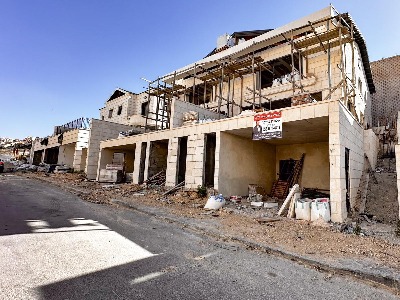
The Templars in Jerusalem
The German Colony, HaMoshava HaGermanit, is a neighborhood in Jerusalem built in the second half of the 19th century. The name derives from the organization which founded the neighborhood- the German Temple Society; a religious Lutheran missionary society that believed in settling in the holy land. By 1910, there were already well-established German settlements and thriving communities in Jerusalem, Haifa, Sarona, Wilhelma, Bethlehem and Waldheim near Nazareth. The settlement in Jerusalem was their third in Palestine after the one in Haifa and Jaffa. The settlement in Jerusalem was an agricultural settlement, built on fallow agricultural land outside the walls of Jerusalem. It was established 1873 after one of the colonists, Matthaus Frank, bought a large tract of land in the Refaim Valley from a landowner in Beth Safafa. The Templars were Christians who broke away from the Protestant church and encouraged their members to settle in the Holy Land to prepare for Messianic salvation. They built their homes in the style to which they were accustomed in Germany – farmhouses of one or two stories, with slanted, tiled roofs and shuttered windows, but using local materials such as Jerusalem Stone instead of wood and bricks. The colonists engaged in agriculture and traditional trades. Their homes ran along two parallel streets that would become Emek Refaim and Derech Beit Lechem.
One of the most famous landmarks of German initiative in Jerusalem is the Augusta Victoria Hospital on Mount Scopus, which is a grand building more like a palace than a hospital. According to hearsay, it was built by the Germans who had “designs” on Palestine as a potential government house for their seat of government in the holyland. When the British took over in 1917, it became their government house. The residence of the high commissioner for Palestine was built in the late 1920’s.
The original templar residents were gradually shipped to Australia, first as enemy aliens during the second world war, and after the establishment of the state of Israel as undesired German nationals. The well-to-do middle class Arab families who built houses in the area either fled or were evicted after Israel’s War of Independence.
After the War of Independence, the empty houses were used to house immigrants and the neighborhood deteriorated from being the abode of affluent families to being something of a slummish backwater. Since the end of the 20th century, the neighborhood has undergone a process of gentrificatrion. Efforts are being made to restore old landmark buildings and incorporate some of their architectural features, such as arched windows and tiled roofs, in new construction. Numerous cafes, bars, restaurants, and boutiques have opened in the neighborhood, and many affluent families have moved in, pushing up the price of real estate. The German Colony has a large English-speaking population, with the English-speaking community comprising both families and singles, permanent immigrants and visitors.
The colorful history of the German Colony is illustrated by the mix of architectural styles found within a relatively small area. One finds Swabian-style homes, examples of late provincial Ottoman architecture and British Art Deco from the Mandatory period, within close proximity. An example of British architecture is the Scottish Hospice and St. Andrew’s Church, built in 1927, which is decorated with local Armenian tile work. Some of the Templar homes have biblical inscriptions in German on their lintels. Similar tiling can be seen on the facades of some buildings on Emek Refaim.
The neighborhood is home to the Smadar Theater, Jerusalem’s art-house cinema and a perennial gathering place. Located on the corner of Emek Refaim and Lloyd George Street, the Smadar was built during the British Mandate, when it was known as the Regent or the Orient. At the corner of Emek Refaim, on a hill overlooking the Hinnon Valley, is the Scottish Church of St. Andrew’s, built in 1927 and incorporating local Armenian tile-work.
The side streets of the German Colony are named for Gentile supporters of Zionism and the Jewish people, such as French author, Emile Zola, who defended Alfred Dreyfus, Czech president Tomas Masaryk, and South African prime minister Jan Smuts. Many other streets are named for prominent Britons such as Lloyd George, British Labor Party leader Josiah Wedgewood, Colonel John Patterson, commander of the Jewish Legion in the First World War, and the pro-Zionist British general, Wyndham Deedes.
Presently, the real estate market in the German Colony is hot. Prices have appreciated consistently over the last 4 years. Alyssa Friedland, Broker/Owner of RE/MAX Vision in Jerusalem told ‘In Jerusalem’ that “Smaller properties have appreciated as much as 50% over this 4-year period, and larger properties have seen as much as 20-30% appreciation“. Land and empty lots are scarce in this area of the city. As a result, many savvy investors and developers have bought up older, run-down properties, especially those with architectural significance, and renovated them. Some have even applied for and obtained permits to build additional floors, thus creating new properties, yet maintaining the “old-world charm” of the original structure. Strict building codes require historical properties to adhere to and blend in with the original architecture of the property, thereby preserving the beauty and character that was originally intended. Friedland adds, “This adherence to the historical architectural character is one of the reasons many foreign buyers, who want to purchase vacation homes, tend to buy these Old World structures. The ancient stone and arched windows turn their spiritual connection into a physical connection as well.“ For the larger, more luxurious properties, priced anywhere from $7,000- $9,000 per sqm, 60%-70% are bought by wealthy foreign buyers. Smaller apartments, with prices of $5,000- $6,000 per sqm, are slightly more affordable to the local population and for new immigrants making aliyah.
Recent Tranactions in German Colony by RE/MAX Vision:
Emek Refaim Street- 5 rooms, 3 bathrooms, 134 sqm, ground floor with small garden- sold for NIS 3,600,000
Hildesheimer Street- 4 rms, 2 baths, 2nd floor, 70 sqm- sold for NIS 2,080,000
HaMelitz Street- 3 rm, 1.5 baths, 78 sqm, small garden- sold for NIS 2,200,000
HaTzefira Street- 7 rms, 3 baths, 160 sqm, garden- sold for NIS 3,680,000
Currently on the market:
HaMagid Street / corner of Emek Refaim- 6-room penthouse, 230sqm, 3 full baths, high ceilings, 3 sukkah balconies, private parking- asking price: NIS 6,800,000
Avishai Street- single family – 5 rooms with large basement suite, 3 full baths, 3 levels, large garden, 213 sqm, parking, storage – asking price: NIS 5,900,000
Emek Refaim- 3 rooms, 1.5 baths, 60 sqm, 2nd floor, good condition. Asking price : NIS 1,700,000
Yehoshua Bin Nun Street- 2 rooms, 1 bath, balcony, renovated, 56 sqm. Asking price: NIS 1,600,000

רמת גבעת זאב, יישוב הפרברים השוכן במערב צפון-מערבי של ירושלים, ממשיך למשוך תשומת לב בשוק הנדל"ן. כאשר אנו נכנסים לשנת 2024, חשוב לחקור את טרנדי המחירים הנוכחיים שמצורפים את הנוף הנדל"ן בקהילה הפועם והחיונית הזו.

מבשרת ציון, ממוקמת בלב הרי יהודה הציוריים, מפורסמת ביופיה הנוף, אווירתה השקטה, והקרבה לירושלים.
ספרו לנו מה אתם מחפשים, ונשמח לעמוד לשירותכם